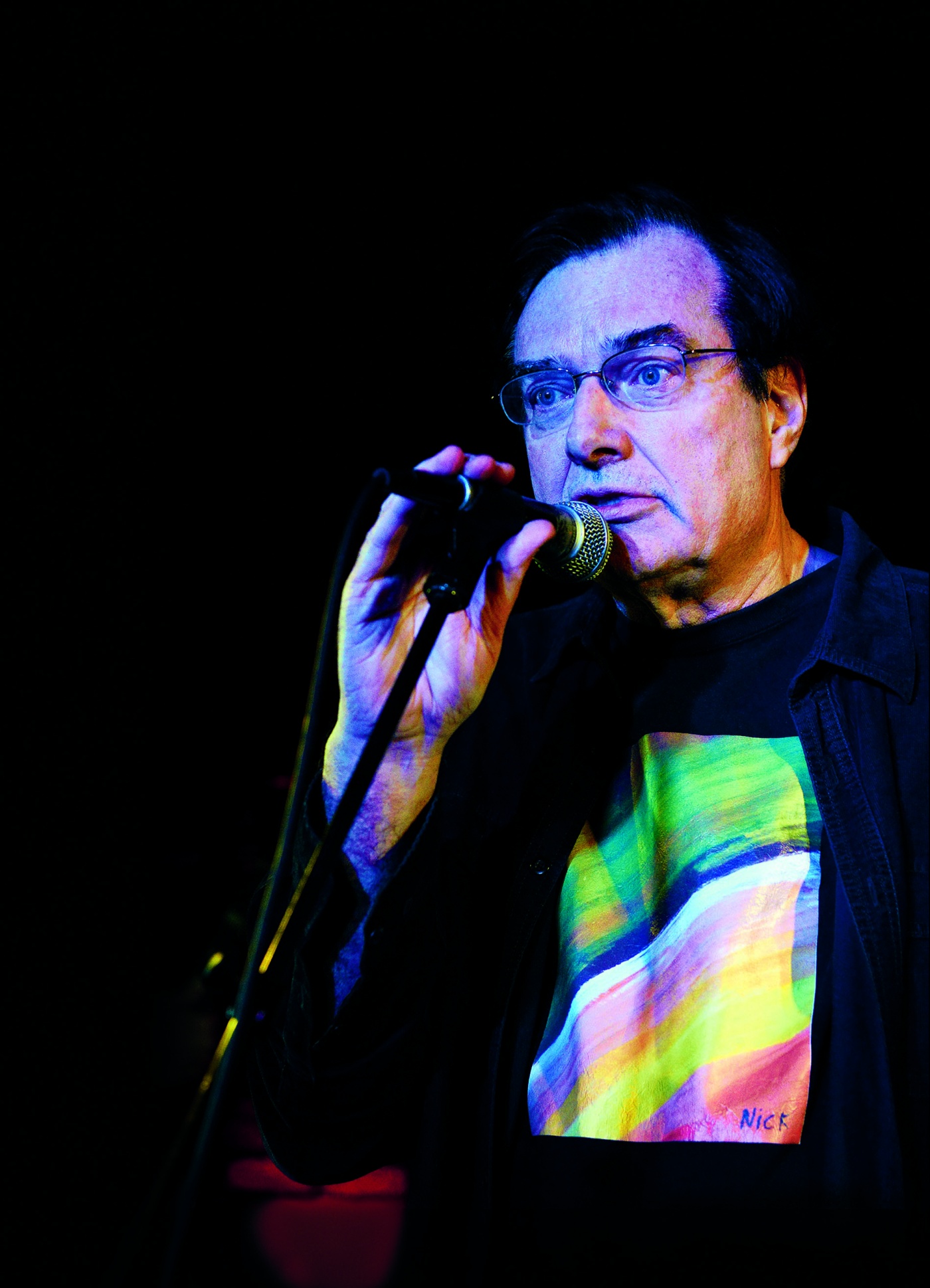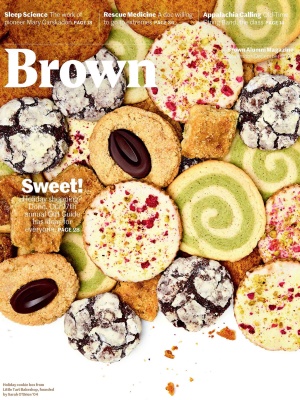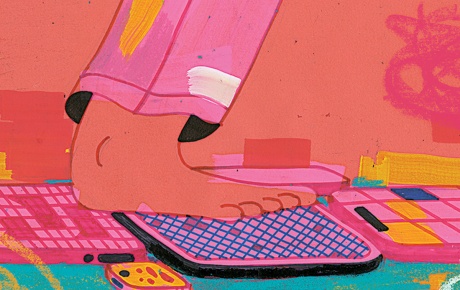Live and In Person
He teaches rock music history. He lived it, too.
For Steve Morse ’70, the summer of ’69 meant one thing: studying abroad. Visiting England to help excavate relics on an archaeological dig in Winchester, Morse hitchhiked to London one weekend and joined 400,000 other hippies at what’s now considered a historic moment in rock music history: the Rolling Stones playing Hyde Park. “I wore stovepipe bell bottom pants and a Nehru shirt with beads and an opera hat—one of those Abe Lincoln hats that made me look seven feet tall,” says Morse, who stands six foot five. “People literally pushed me down to the front so I’m thirty feet away from Mick Jagger as he’s releasing butterflies into the air.”

Back at Brown, Morse, an English major, saw the Doors, Jimi Hendrix, and Janis Joplin, who chugged Southern Comfort during her Meehan Auditorium show, “as advertised,” Morse notes. “I probably went to more concerts than I did classes. Looking back, I was kind of magnetized into the world of rock ’n’ roll.”
After graduation, Morse taught high school social studies and wrote freelance reviews until 1978, when the Boston Globe hired him to cover rock and pop music. He attended about 250 shows a year, typically going to bed around 4:30 in the morning. “I always thought rock ’n’ roll was best appreciated live and in person,” Morse explains. “I liked the community of people, the action, the energy, the lunacy, the after-parties—all of it.”
Morse balanced music journalism with the challenge of raising his son, Nick, who has autism. He remembers the brusque evaluation offered by specialists: “They said, ‘We’ve concluded that your son will be lucky if he can be a stock boy in a supermarket some day.’” Instead, Nick Morse grew up to become an artist whose paintings are sold on his eponymous website. “Nick’s essentially non-verbal,” Morse says, “so he expresses himself through this kaleidoscope of beautiful colors. I couldn’t be more proud.”
During his 28-year tenure at the Globe, Morse enjoyed close encounters with heavy hitters including Paul Simon (“the smartest musician”), Keith Richards (“everything is priceless with Keith because he shoots from the hip”), and Bruce Springsteen (“Bruce spent two hours with these Make-A-Wish kids, giving his all just like he does on stage”). When Morse celebrated his 2006 retirement buyout at a Boston tavern, U2’s Bono showed up and sang “For He’s a Jolly Good Fellow.”
Now working at Berklee College of Music, he created Berklee Online’s Rock History course. “We get heavy metal kids in Finland and Norway, people from Malaysia and South America,” he says. “It’s an honor to represent this powerhouse music school.” The 12-lesson program includes an essay question about the future of rock ’n’ roll. How would Morse himself answer? “I’m basically an optimist,” Morse says. “I like music with guitars, with some bite, and I think that will come back again.”



